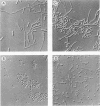Abstract
We observed considerable variability in colony and microscopic morphology among isolates of Trichosporon beigelii. Deeply invasive clinical isolates showed four distinct morphotypes and spontaneous conversions among certain morphotypes and grew well at 37 degrees C. In contrast, superficial clinical and environmental isolates did not demonstrate such morphotypes or conversions, and most grew poorly at 37 degrees C. Thus, the morphologic and physiologic features of invasive clinical isolates of T. beigelii follow certain patterns distinct from those of superficial clinical and environmental isolates.
Full text
PDF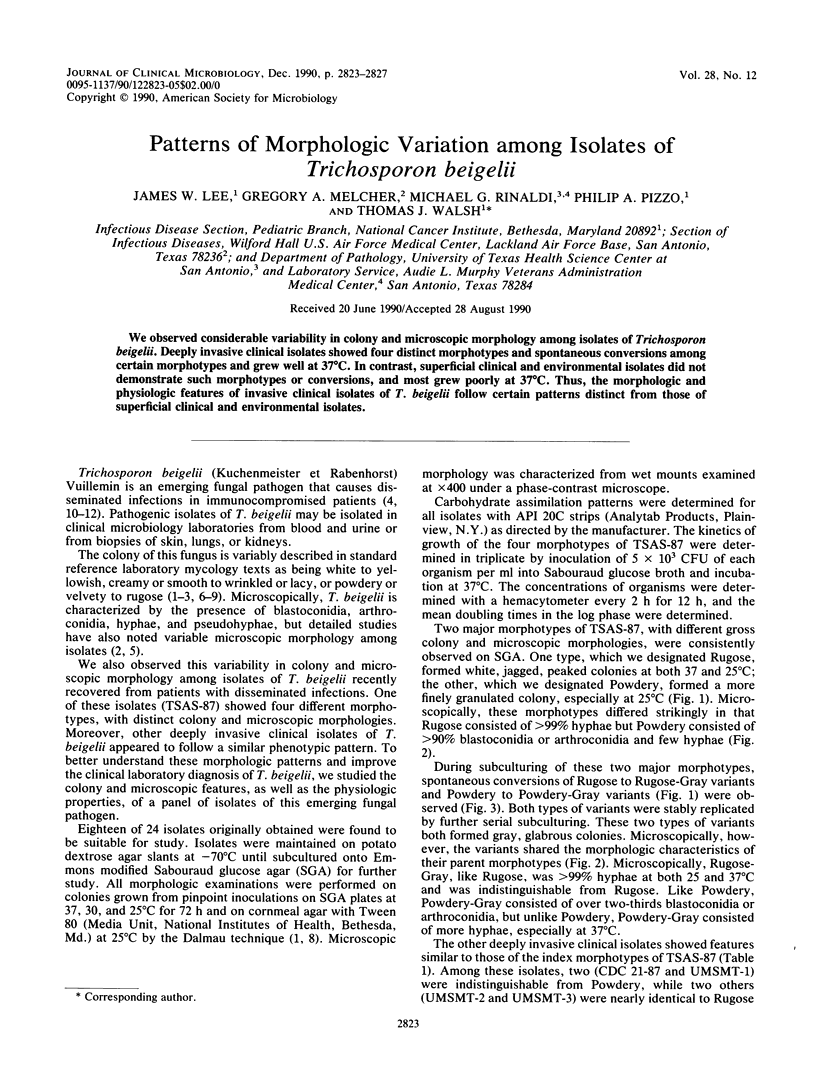
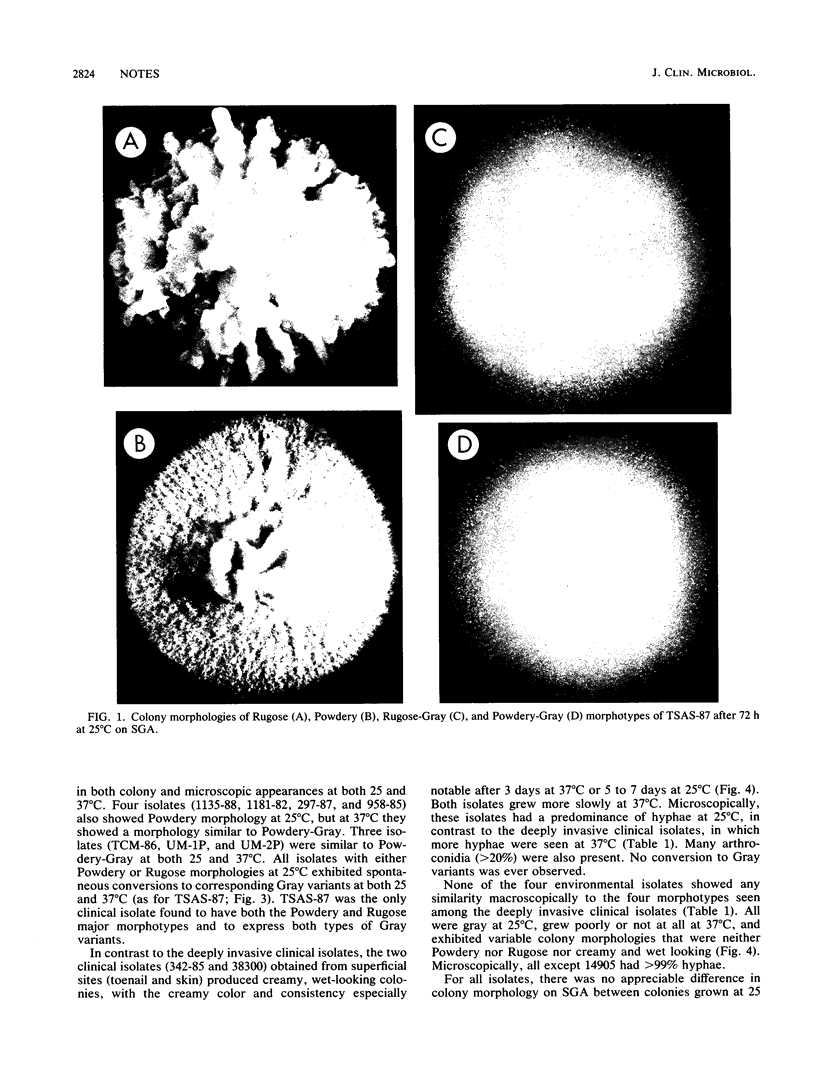
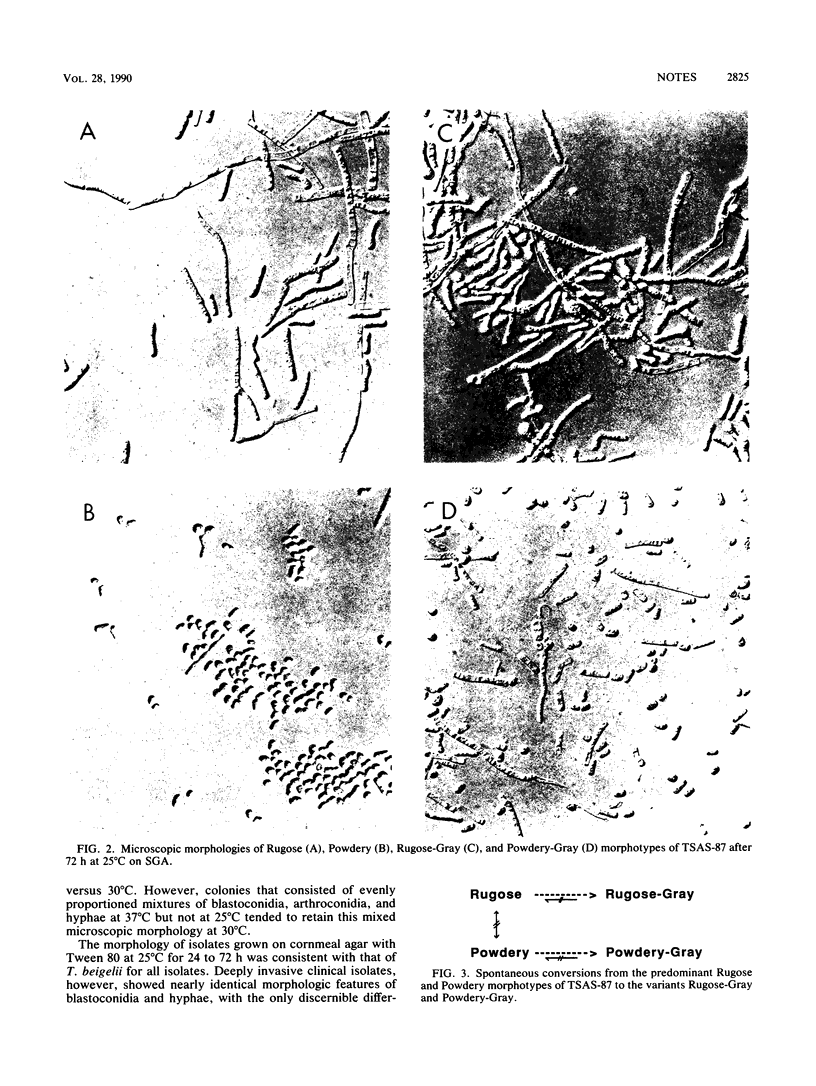
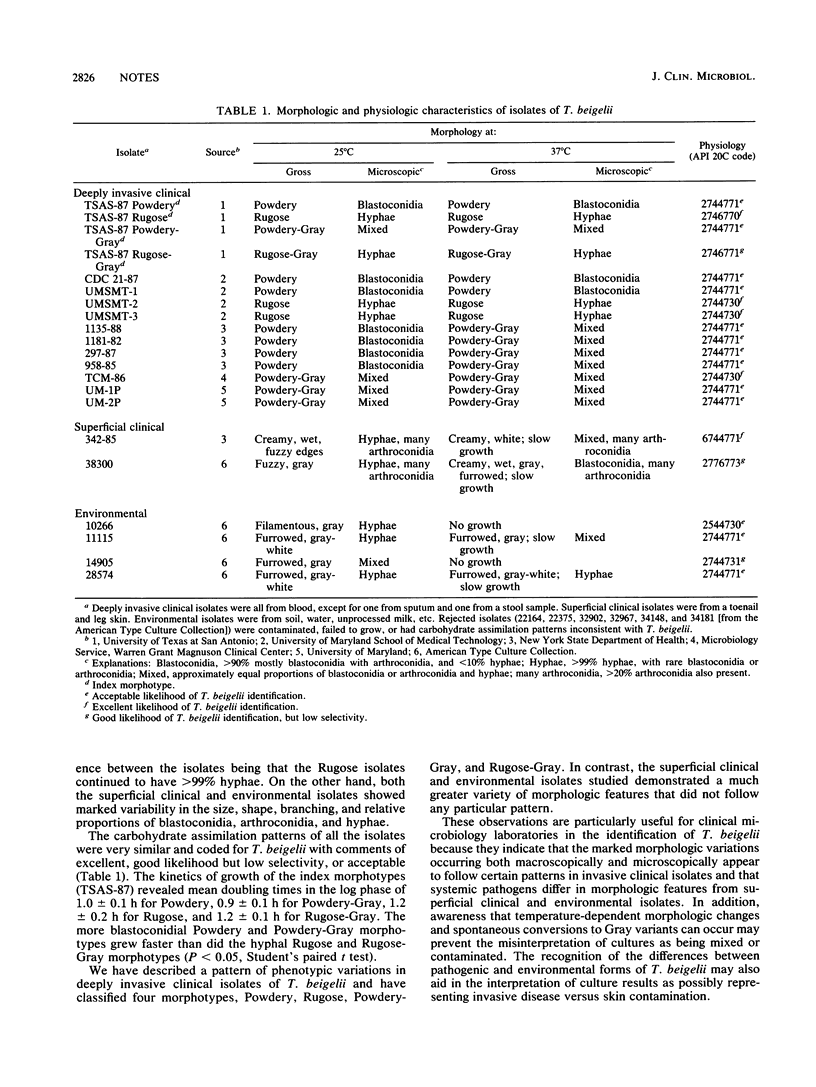
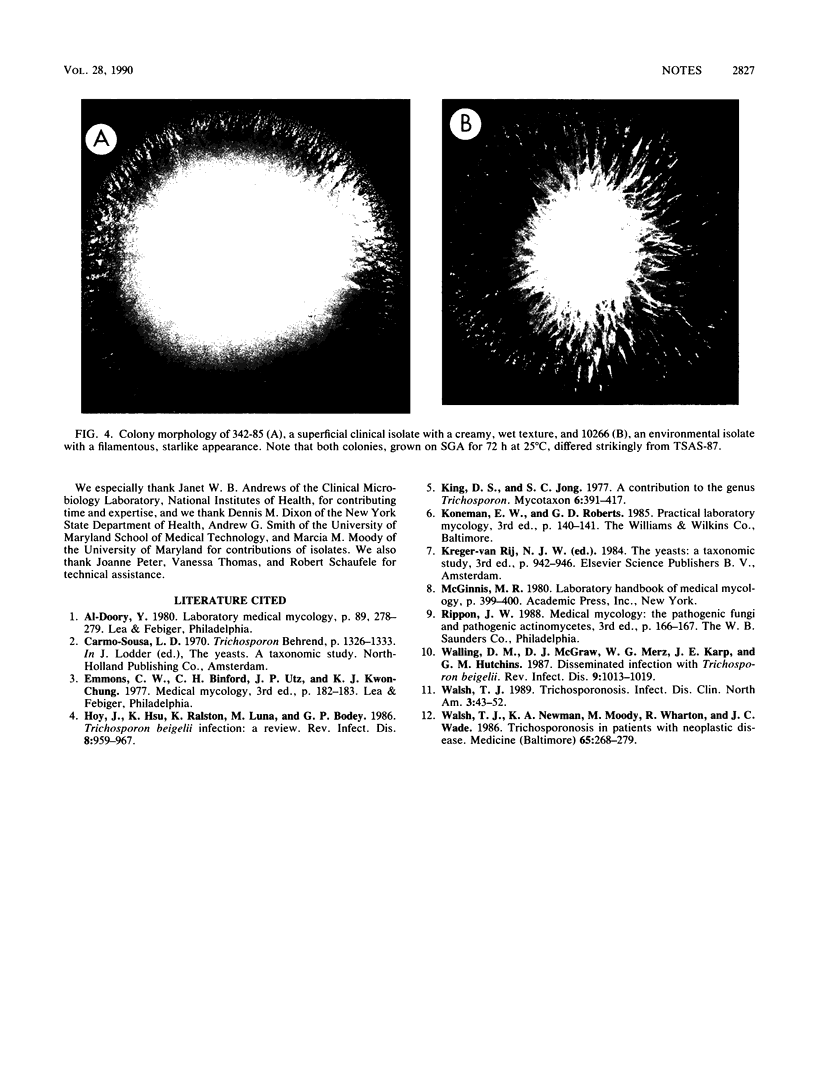
Images in this article
Selected References
These references are in PubMed. This may not be the complete list of references from this article.
- Hoy J., Hsu K. C., Rolston K., Hopfer R. L., Luna M., Bodey G. P. Trichosporon beigelii infection: a review. Rev Infect Dis. 1986 Nov-Dec;8(6):959–967. [PubMed] [Google Scholar]
- Walling D. M., McGraw D. J., Merz W. G., Karp J. E., Hutchins G. M. Disseminated infection with Trichosporon beigelii. Rev Infect Dis. 1987 Sep-Oct;9(5):1013–1019. doi: 10.1093/clinids/9.5.1013. [DOI] [PubMed] [Google Scholar]
- Walsh T. J., Newman K. R., Moody M., Wharton R. C., Wade J. C. Trichosporonosis in patients with neoplastic disease. Medicine (Baltimore) 1986 Jul;65(4):268–279. doi: 10.1097/00005792-198607000-00005. [DOI] [PubMed] [Google Scholar]
- Walsh T. J. Trichosporonosis. Infect Dis Clin North Am. 1989 Mar;3(1):43–52. [PubMed] [Google Scholar]




